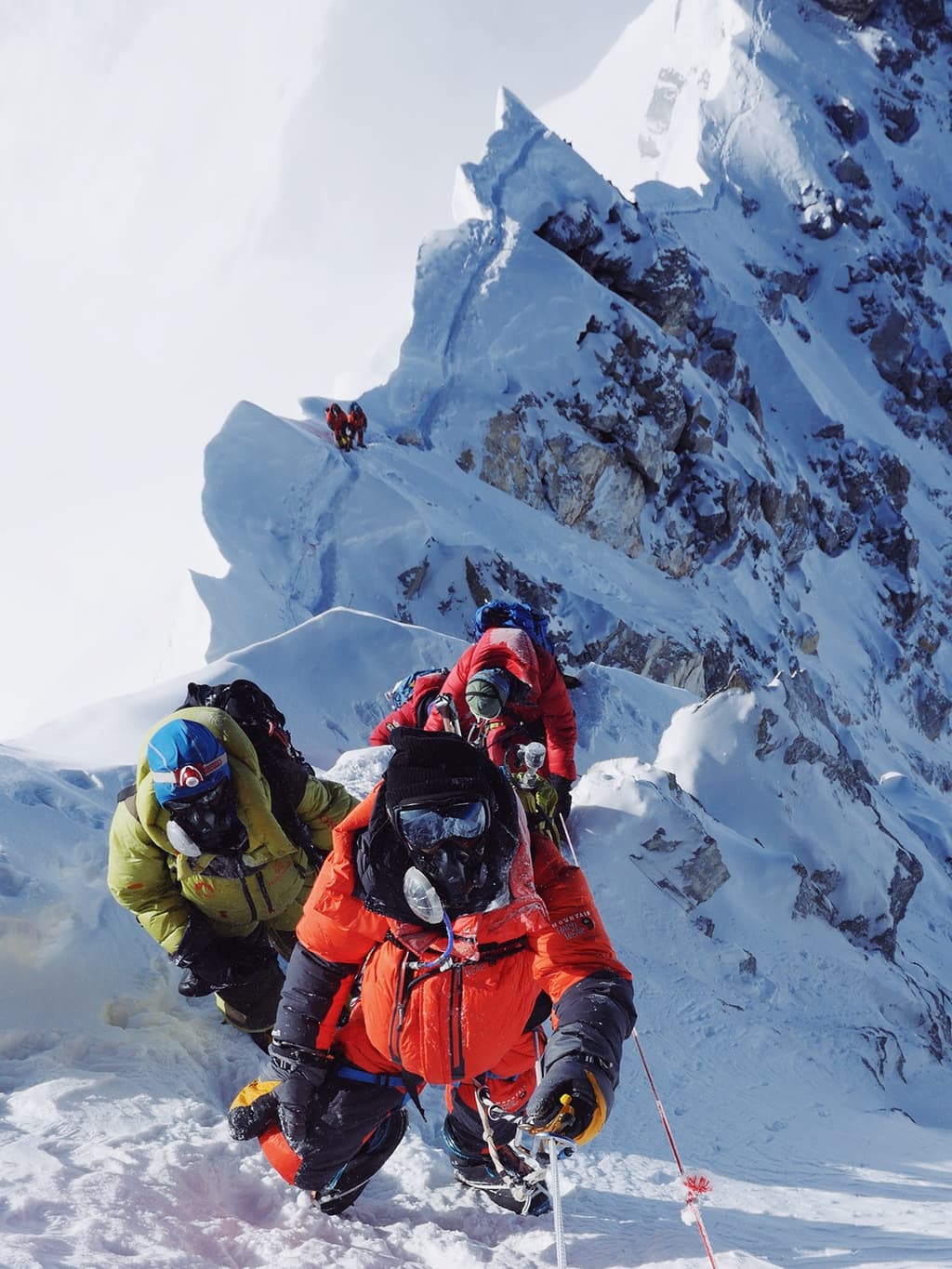Ever stood at the foot of a Himalayan giant, wondering if you've got what it takes? Mera Peak might be your answer. At 6,476 meters, it's Nepal's highest trekking peak – technically challenging enough to feel like a real mountaineering achievement, yet accessible enough for determined trekkers with basic climbing skills.
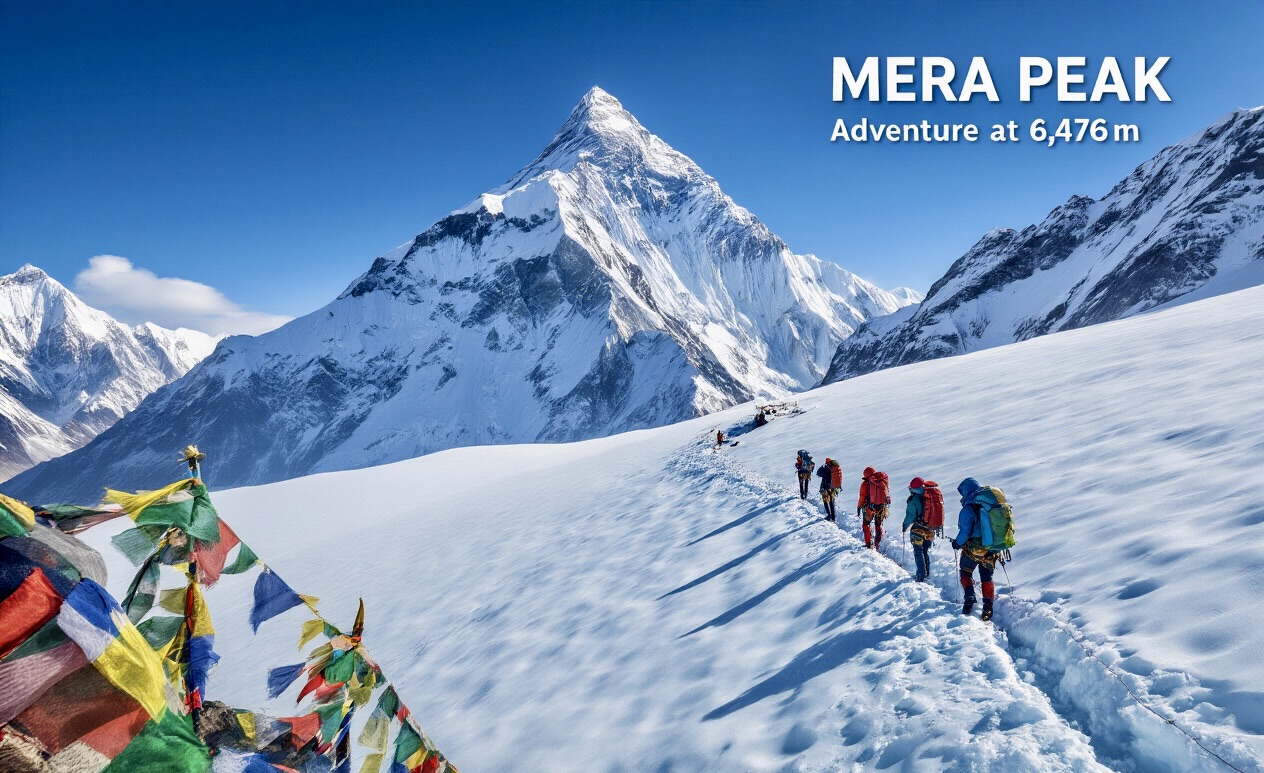
The Mera Peak climbing cost typically ranges from $2,200 to $3,500, depending on your service level, group size, and season. But what exactly are you paying for?
I've guided hundreds of climbers up this magnificent mountain, and I'll break down everything: the 16-day itinerary that maximizes acclimatization, the gear you'll need, and the physical preparation that separates successful summiteers from those who turn back.
But first, let me tell you about the moment that keeps climbers coming back to Mera Peak year after year...
Overview of Mera Peak
Location and features of Mera Peak
Perched at a towering 6,476 meters (21,247 feet) in the Mahalangur section of the Himalayas, Mera Peak stands as Nepal's highest trekking peak. We've guided countless adventurers through this magnificent mountain located in the Everest region's less-traveled Hinku Valley.
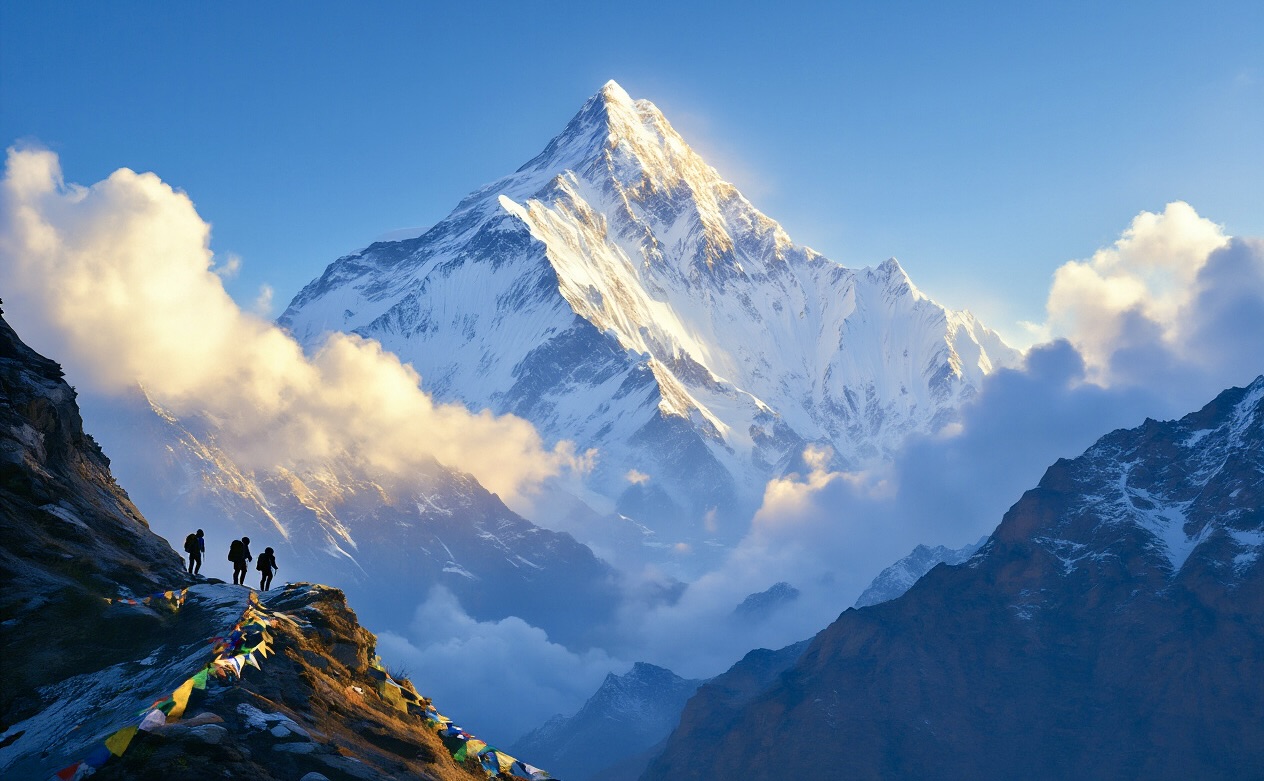
The peak actually consists of three main summits: Mera North, Mera Central, and Mera South. Most climbers target Mera Central, which offers the most straightforward route. What makes this peak truly special is the panoramic view it provides – on a clear day, we can see five of the world's 8,000m giants: Everest, Lhotse, Cho Oyu, Makalu, and Kangchenjunga.
Unlike many technical climbs in the region, Mera Peak features relatively gentle slopes, though the final ascent requires crossing a glacier and navigating a short but steep snow slope.
Why Mera Peak is popular among climbers
Mera Peak hits that sweet spot for mountaineers looking to step beyond trekking but aren't quite ready for extreme technical climbing. We've seen this peak become the go-to first Himalayan summit for many reasons.
First off, it's technically manageable for beginners with proper guidance. You don't need to be an elite mountaineer – just reasonably fit with basic crampon and ice axe skills that we can teach you during the expedition.

The peak also serves as perfect high-altitude training for those eyeing bigger Himalayan challenges. Many of our climbers who successfully summit Mera later return for more technical adventures.
And those views? Absolutely mind-blowing. The summit panorama of numerous 8,000m peaks creates memories that stick with our climbers forever.
Best time to climb Mera Peak
We've learned through years of experience that timing is everything when climbing Mera Peak. The two prime seasons stand out clearly:
Pre-monsoon (Spring): March to May
Spring brings stable weather, warmer temperatures, and stunning rhododendron blooms along the lower trails. April and early May offer the best combination of clear skies and manageable temperatures.
Post-monsoon (Autumn): September to November
This is our favorite season for Mera Peak expeditions. The air is crystal clear after monsoon rains, offering the best mountain views. October is particularly ideal with stable weather and comfortable temperatures.
Winter climbs (December-February) are possible but challenging due to extreme cold and high winds. Summer months coincide with monsoon season, bringing dangerous conditions that we always recommend avoiding.
Comprehensive Mera Peak Climbing Cost
Basic expedition package price
The truth about Mera Peak costs? They vary widely. Our standard package starts at $2,450 per person, which is competitive considering what you're getting. This base price covers the essentials for a 16-day expedition, though many climbers opt for additional services.

For small groups of 2-4 people, we charge $2,600 per person. Solo climbers pay a bit more at $2,850 due to the personalized attention required. Larger groups of 5+ enjoy our best rate at $2,450 per person.
During peak seasons (April-May and October-November), prices may increase by 10-15% due to high demand. Book at least 3-4 months in advance to lock in better rates.
What's included in the standard package
Our standard Mera Peak package is comprehensive. Here's what we cover:
- Airport transfers in Kathmandu
- 3 nights at a 3/4/5-star hotel in Kathmandu (twin sharing)
- Domestic flights (Kathmandu-Lukla-Kathmandu)
- All meals during the trek and climb (except in Kathmandu)
- Experienced climbing guides (English speaking)
- Required porters to carry equipment (30kg per client)
- Teahouse/lodge accommodations during the trek
- Camping equipment (tents, mattresses, kitchen gear)
- Group climbing gear (ropes, ice screws)
- All permit fees and government taxes
- Staff insurance and their equipment
We've designed this package based on years of experience, ensuring we cover all the essentials without unnecessary extras that drive up costs.
Optional costs and add-ons
Want to enhance your Mera Peak experience? We offer several add-ons:
- Private guide supplement: $300
- Oxygen system rental: $380 (includes mask, regulator, 2 bottles)
- VIP helicopter evacuation insurance: $1500
- Satellite phone rental: $15/day plus usage
- Personal porter (additional): $25/day
- Single room supplement in Kathmandu: $40/night
- Extra night in Kathmandu: $60 (3-star hotel) / $90 (4-star hotel) / $150 (5-star hotel)
- Guided Kathmandu city tour: $85
The most popular add-on is our acclimatization package ($200), which includes an extra 2 days with specialized training before the main climb. About 70% of our clients choose this option, and it significantly improves summit success rates.
Permit and insurance expenses
The paperwork costs for Mera Peak shouldn't be underestimated. Here's the breakdown:
- Mera Peak climbing permit: $250 (spring), $125 (autumn), $70 (winter/summer)
- Sagarmatha National Park entry fee: $30
- Khumbu Pasang Lhamu Rural Municipality fee: $20
- TIMS card (Trekkers' Information Management System): $10
Insurance is non-negotiable for this expedition. You'll need:
- Comprehensive travel insurance that covers high-altitude trekking up to 6,500m
- Emergency helicopter evacuation coverage (minimum $5,000)
- Medical coverage (minimum $50,000)
Quality insurance typically costs $150-250, depending on your country of residence and coverage level. We can recommend reliable providers who understand the specific needs of Himalayan expeditions.
Equipment rental options and costs
Don't want to invest in expensive gear you might use just once? We've got you covered with our rental options:
|
Equipment |
Daily Rate |
Full Expedition (16 days) |
|
Down suit |
$15 |
$150 |
|
Sleeping bag (-20°C) |
$5 |
$50 |
|
Mountaineering boots |
$8 |
$80 |
|
Crampons |
$5 |
$50 |
|
Ice axe |
$5 |
$50 |
|
Harness |
$3 |
$30 |
|
Helmet |
$3 |
$30 |
|
Jumar/ascender |
$2 |
$20 |
|
Complete package |
$40 |
$380 |
Our rental gear is high-quality and well-maintained. We use brands like Black Diamond, La Sportiva, and Mountain Hardwear. Most climbers rent at least some items, saving hundreds in purchase costs and reducing luggage hassles. We recommend renting the bulkier items and bringing personal gear like base layers and gloves.
Detailed Day-by-Day Itinerary
Arrival in Kathmandu and Preparations
We welcome you to Kathmandu, the vibrant capital of Nepal and the gateway to your Mera Peak adventure. Upon your arrival at Tribhuvan International Airport, our team will greet you and transfer you to your hotel in the heart of the city.
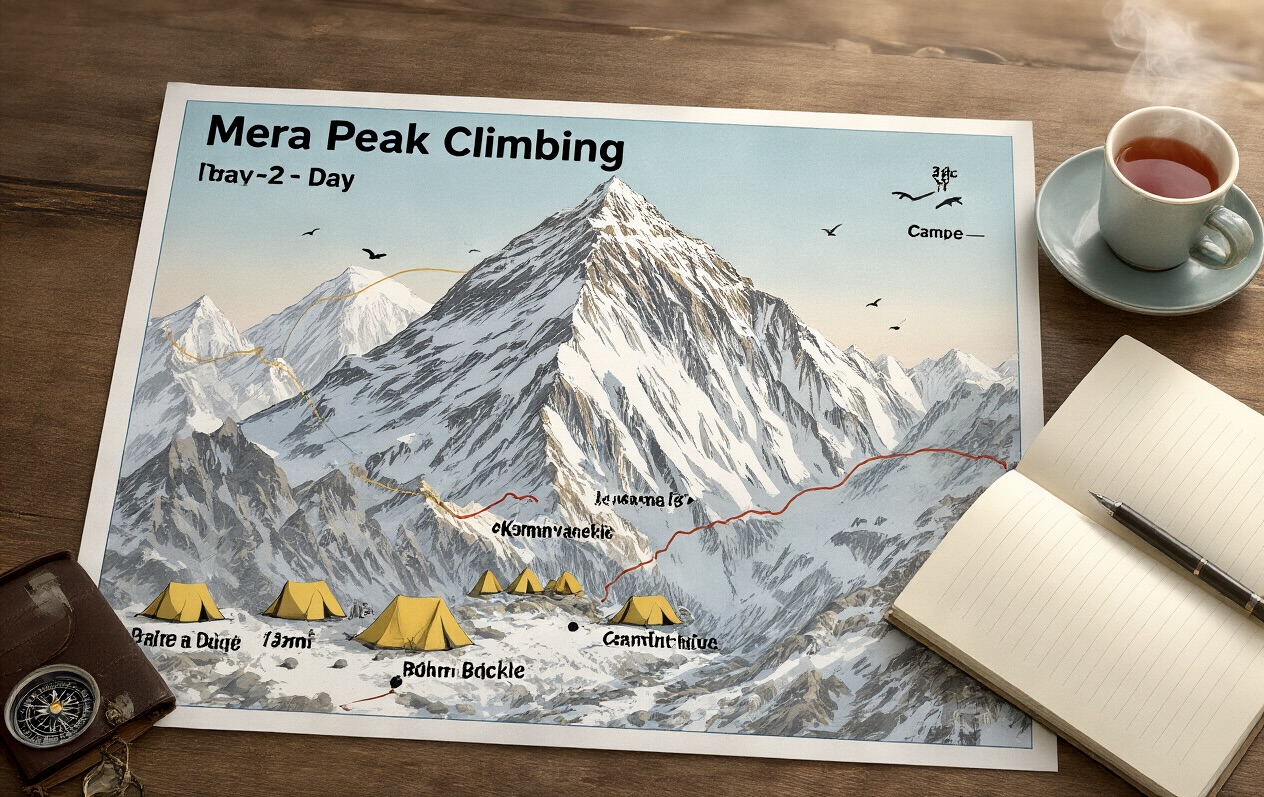
Day 1 and 2 are dedicated to preparations and acclimatization to the altitude and time zone. During this time, we'll arrange a comprehensive briefing session where we'll go through the entire climbing itinerary, check your gear, and address any questions you might have.
Don't worry if you've forgotten some equipment – Kathmandu's Thamel district is packed with shops selling and renting quality mountaineering gear at reasonable prices. We'll help you find whatever you need.
We also use these days to process your climbing permits. While we handle the paperwork, you're free to explore Kathmandu's UNESCO World Heritage sites like Pashupatinath Temple, Boudhanath Stupa, and Durbar Square – all incredible places that showcase Nepal's rich cultural heritage.
Flight to Lukla and Initial Trek
Day 3 marks the real beginning of our adventure with an early morning flight to Lukla (2,840m). This 30-minute flight offers stunning views of the Himalayas and is an experience in itself, landing at the famous Tenzing-Hillary Airport.
From Lukla, we start our trek through charming Sherpa villages, terraced fields, and rhododendron forests. Our route takes us to Phakding (2,610m) on the first day – a relatively easy walk that helps us ease into the trekking rhythm.
The following days see us making our way to Namche Bazaar (3,440m), the bustling hub of the Khumbu region, and then continuing through less-traveled trails toward Mera Peak. We follow the path through Thame, Thagnag, and eventually to Khare, gradually gaining altitude while soaking in the spectacular mountain scenery.
Acclimatization Days and Their Importance
Acclimatization isn't just important – it's essential for a successful and safe climb. We build specific acclimatization days into our itinerary at strategic points like Namche Bazaar, Thame, and Khare.
During these days, we follow the mountaineer's golden rule: "climb high, sleep low." We take day hikes to higher elevations and return to sleep at lower altitudes, helping your body adapt to the decreasing oxygen levels. At Khare (5,045m), we spend two nights and use one full day for glacier training and getting comfortable with your climbing equipment.
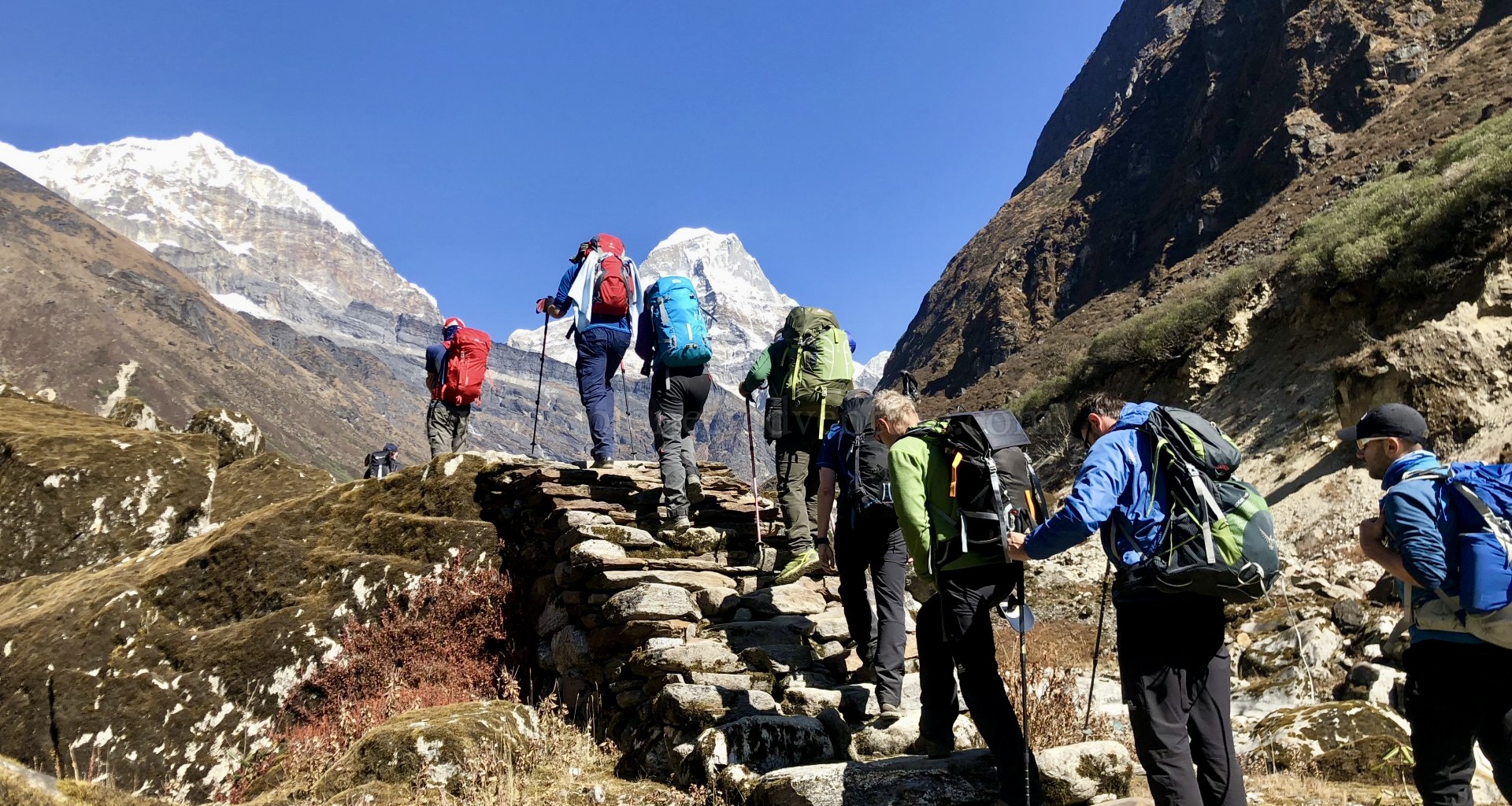
These rest days aren't just about physical acclimatization – they're opportunities to immerse yourself in local culture, enjoy the stunning surroundings, and conserve energy for the challenging days ahead. We monitor everyone closely for any signs of altitude sickness and adjust the pace as needed.
Summit Push Strategy
Our summit strategy is carefully planned to maximize success while prioritizing safety. After thorough acclimatization and training, we establish Mera Peak Base Camp at 5,300m, where we prepare for the final ascent.
From Base Camp, we move to High Camp at 5,800m – a challenging but crucial day. At High Camp, we rest, hydrate, and prepare our gear while taking in breathtaking views of Everest, Lhotse, Makalu, and Cho Oyu.
Summit day begins around 2:00 AM when we start our climb by headlamp. This early start ensures we reach the summit (6,476m) in optimal conditions and have enough time for the descent. The climb involves moderate to steep snow slopes requiring the use of crampons, ice axes, and ropes.
Standing on the summit as the sun rises over the Himalayas creates memories that last a lifetime – five of the world's six highest mountains visible in a panorama that defies description.
Descent and Return Journey
After celebrating at the summit, we begin our careful descent to High Camp and potentially continue to Khare on the same day, depending on the team's condition. The descent requires just as much focus as the ascent, and we take it step by step.
Over the next few days, we make our way back through the valleys, but on a slightly different route to experience new villages and landscapes. The descent is generally faster than the ascent, but we still take time to enjoy the surroundings and celebrate our achievement.
Our return trek takes us through Kothe, Thuli Kharka, and eventually back to Lukla, where we catch our flight back to Kathmandu. Upon returning to the capital, we celebrate with a special farewell dinner, sharing stories and reflecting on our incredible journey.
The final day in Kathmandu gives you time for last-minute shopping or sightseeing before we transfer you to the airport for your departure flight, taking home memories and accomplishments that will stay with you forever.
Essential Preparation for Mera Peak
Physical fitness requirements
Climbing Mera Peak isn't your average weekend hike. We've guided hundreds of climbers and can tell you straight - physical preparation is non-negotiable. You'll need excellent cardiovascular endurance for those long trekking days and steep ascents. Most days involve 6-8 hours of hiking with a pack, and summit day pushes 10-12 hours of continuous effort.

Strong legs are your foundation - focus on building quad, hamstring, and calf strength. Your core matters too, especially when navigating technical sections with a pack. We recommend being able to comfortably hike 8-10 miles with 3,000+ feet of elevation gain before attempting Mera.
Technical skills needed
The good news? Mera Peak is technically accessible for beginners with the right preparation. You'll need basic crampon and ice axe skills - knowing how to walk confidently on snow and ice slopes up to 40 degrees. Rope work knowledge is essential since we use fixed lines on steeper sections.
Basic understanding of harness use, clipping into fixed lines, and simple ascending/descending techniques will serve you well. Don't worry if you're new to this - we offer pre-climb training days near base camp to practice these skills.
Recommended training schedule
Start your training program at least 4-6 months before your climb:
- Months 4-6: Focus on building base fitness with 3-4 weekly cardio sessions (45-60 minutes each)
- Months 2-3: Add targeted strength training twice weekly and increase hiking distance
- Final month: Include 1-2 long hikes weekly with a loaded pack (30-40lbs)
Weekly training plan for the final two months:
- Monday: Strength training (legs and core)
- Tuesday: Cardio (45-60 minutes)
- Wednesday: Rest or light activity
- Thursday: Strength + short cardio
- Friday: Rest
- Weekend: Long hike with pack (gradually increasing time and elevation)
Altitude sickness prevention
We take altitude seriously because we've seen how it can end a climb quickly. Our itinerary includes strategic acclimatization days to help your body adapt gradually. Hydration is critical - we recommend drinking 4-5 liters daily during the trek.
The medication Diamox (Acetazolamide) can help with acclimatization, but consult your doctor before taking it. Moving slowly is our mantra - "pole pole" as they say in the Himalayas. We monitor everyone closely for symptoms like headache, nausea, or dizziness.
Remember - there's no shame in turning around if altitude symptoms appear. The mountains will always be there for another attempt.
Equipment and Gear Checklist
Climbing Equipment Essentials
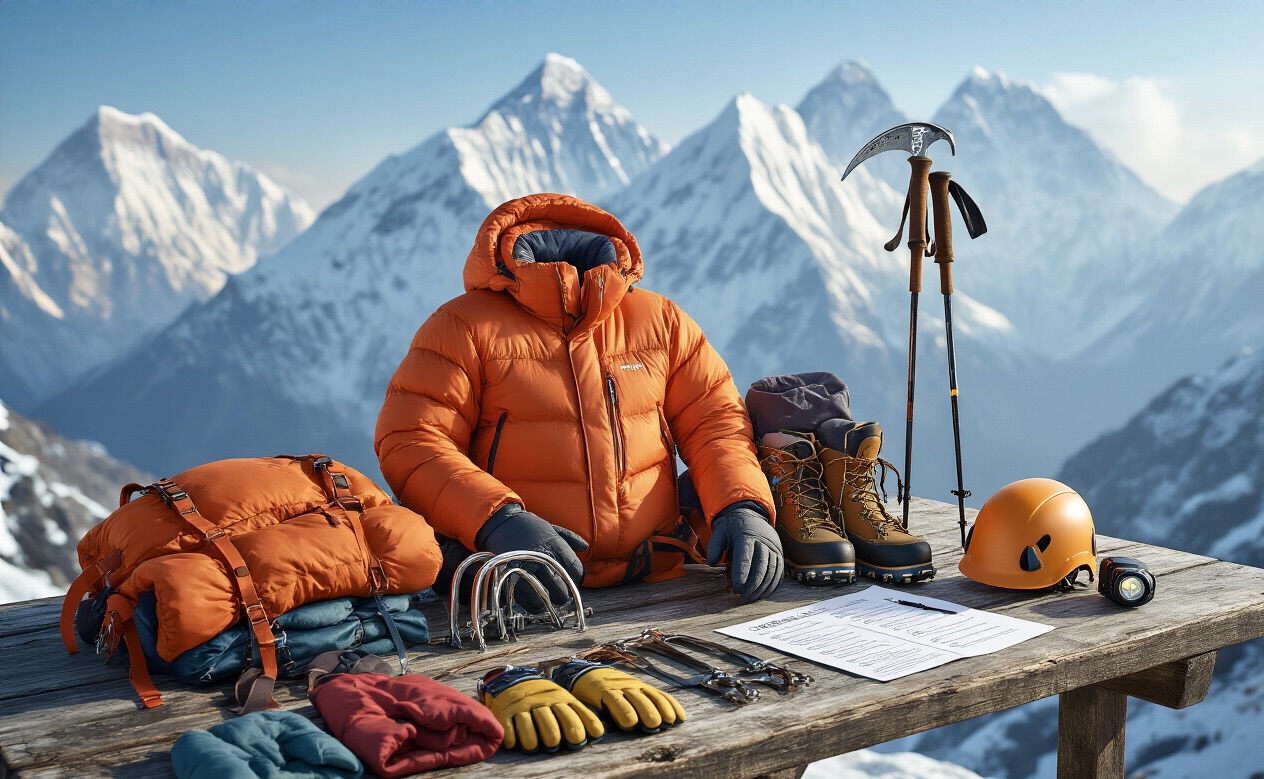
We've guided countless climbers up Mera Peak, and trust us - having the right gear makes all the difference. Here's what you absolutely need:
- Ice axe: A standard 60-70cm mountaineering axe works perfectly
- Crampons: 12-point mountaineering crampons compatible with your boots
- Climbing harness: Lightweight and adjustable to fit over multiple layers
- Carabiners: Bring 2 locking and 2 non-locking
- Prusik cords: Essential for safety on fixed lines
- Climbing helmet: To protect against falling ice and rocks
- Descender/belay device: For rappelling and rope management
- Headlamp: With extra batteries (cold drains them quickly)
- Trekking poles: Collapsible ones save space when not in use
Most technical climbing gear can be rented in Kathmandu if you don't want to invest or carry it all from home. We can arrange this for you before departure.
Clothing Recommendations for Different Elevations
The trick to climbing Mera Peak is layering. Temperatures vary dramatically from Lukla (2,860m) to the summit (6,476m).
Lower Elevations (2,000-3,500m):
- Lightweight hiking pants (convertible preferred)
- T-shirts and long-sleeve moisture-wicking shirts
- Light fleece or softshell jacket
- Light gloves and sun hat
- Rain jacket and pants
Mid Elevations (3,500-5,000m):
- Thermal base layers (top and bottom)
- Mid-weight fleece or down jacket
- Warm hat and gloves
- Thicker hiking socks
High Camp and Summit Push (5,000m+):
- Down suit or heavy down jacket
- Insulated pants
- Heavyweight mittens with liners
- Expedition-weight thermal layers
- Balaclava or face mask
- Glacier sunglasses (category 4)
- Heavy mountaineering boots (double boots recommended)
- Down booties for camp
Personal Items and Medications
Don't overlook these essentials that can make or break your expedition:
Personal Items:
- Sunscreen (SPF 50+) and lip balm with UV protection
- Toilet paper and hand sanitizer
- Quick-dry towel
- Waterproof stuff sacks
- Camera with extra batteries
- Water bottles (2 x 1-liter) and insulated thermos
- Sleeping bag (-20°C/-4°F rating)
- Sleeping pad (inflatable plus foam recommended)
- Duffel bag for porters and small daypack
Medications and First Aid:
- Diamox (for altitude sickness prevention)
- Pain relievers (ibuprofen/paracetamol)
- Broad-spectrum antibiotics
- Throat lozenges
- Band-aids and blister treatment
- Rehydration salts
- Personal prescription medications
- Antidiarrheal medication
- Eye drops (for dust and dryness)
We strongly recommend getting a medical check-up before your trip. While we carry comprehensive first aid kits, having your personal medications easily accessible is crucial when you're feeling the effects of altitude.
Everest Sherpa Expeditions Services
Expert guides and their qualifications
At Everest Sherpa Expeditions, we don't just hire guides—we partner with the elite. Our team consists of IFMGA/UIAGM-certified Sherpa guides with at least 10 years of mountaineering experience. Many of our senior guides have summited Everest multiple times and have extensive experience on Mera Peak, knowing every crevasse and weather pattern.
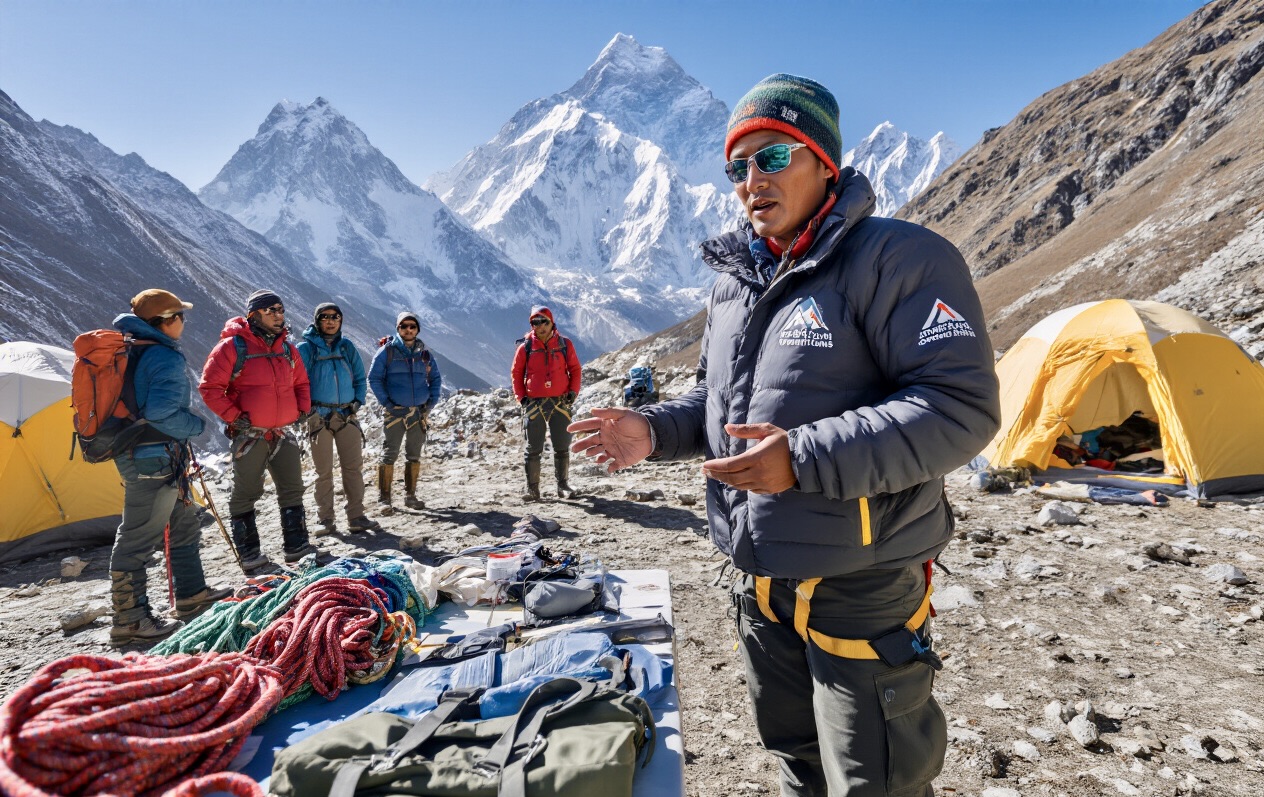
We're particularly proud that our guides are all local Sherpas from the Khumbu region. They bring not just technical expertise but cultural knowledge that enhances your journey. Each guide undergoes annual emergency response training and speaks fluent English, ensuring clear communication when it matters most.
Safety measures and protocols
Your safety isn't just a priority for us—it's our obsession. We maintain a strict 1:2 guide-to-climber ratio on Mera Peak to ensure personalized attention and quick response to any situation.
Our standard safety equipment includes:
- Comprehensive first aid kits with high-altitude medications
- Portable hyperbaric chambers at high camps
- Satellite phones and two-way radios for constant communication
- Pulse oximeters for daily health monitoring
We conduct thorough pre-climb briefings and daily health checks during the expedition. Our team has established emergency evacuation protocols with helicopter services on standby throughout your climb.
Support staff and logistics management
Behind every successful summit is an invisible army making it all happen. Our support team includes experienced cooks preparing nutritious meals at all altitudes, porters who know the terrain like the back of their hand, and base camp managers coordinating operations.
We've perfected our logistics over decades of operation. From the moment you land in Kathmandu until your departure, our team handles all the complex details—permits, transportation, accommodations, and equipment transport.
Our kitchen staff are trained in hygiene protocols and can accommodate various dietary requirements. We use only high-quality equipment, regularly maintained and replaced. At higher camps, we ensure proper acclimatization by setting up comfortable tents with proper insulation and providing hot drinks and meals prepared on-site.
Practical Tips for a Successful Climb
Communication Options During the Expedition
On Mera Peak, staying connected is trickier than you might expect. We've made sure our guides carry satellite phones for emergencies – your safety is our priority. But what about your personal communication needs?

Most teahouses in the lower regions offer Wi-Fi, but don't count on it being reliable or fast. We've seen many climbers face frustration when trying to upload those gorgeous photos! For better connectivity, consider purchasing a local SIM card (Ncell or NTC) in Kathmandu before heading out. These work surprisingly well up to about 4,000 meters.
Beyond that altitude, your best bet is a personal satellite communication device like Garmin InReach or SPOT. We've had clients who've used these successfully all the way to high camp.
Remember to inform your loved ones that you'll have limited contact during certain portions of the climb. Nothing causes more worry back home than unexpected silence!
Money Matters and Tipping Customs
Cash is king on the mountain! We've learned from experience that you should bring enough Nepalese Rupees for the entire journey. ATMs are non-existent once you leave Lukla.
For personal expenses, we recommend carrying about $15-20 per day for extra snacks, hot showers (when available), and charging your devices. Prices increase with altitude – a bottle of water that costs 100 rupees in Lukla might set you back 500 rupees at Khare.
Tipping is customary and appreciated. Our climbing Sherpas, guides, and porters work incredibly hard to make your expedition successful. At the end of your trip, we suggest:
- Guide: $100-150
- Climbing Sherpa: $80-120
- Porters: $50-70 each
These aren't strict rules, just guidelines we've seen work well. The most important thing is to tip based on the service quality and your satisfaction.
Photography Recommendations
Mera Peak offers some of the most spectacular mountain photography opportunities in the world. We've guided countless photographers and have picked up some useful tips.
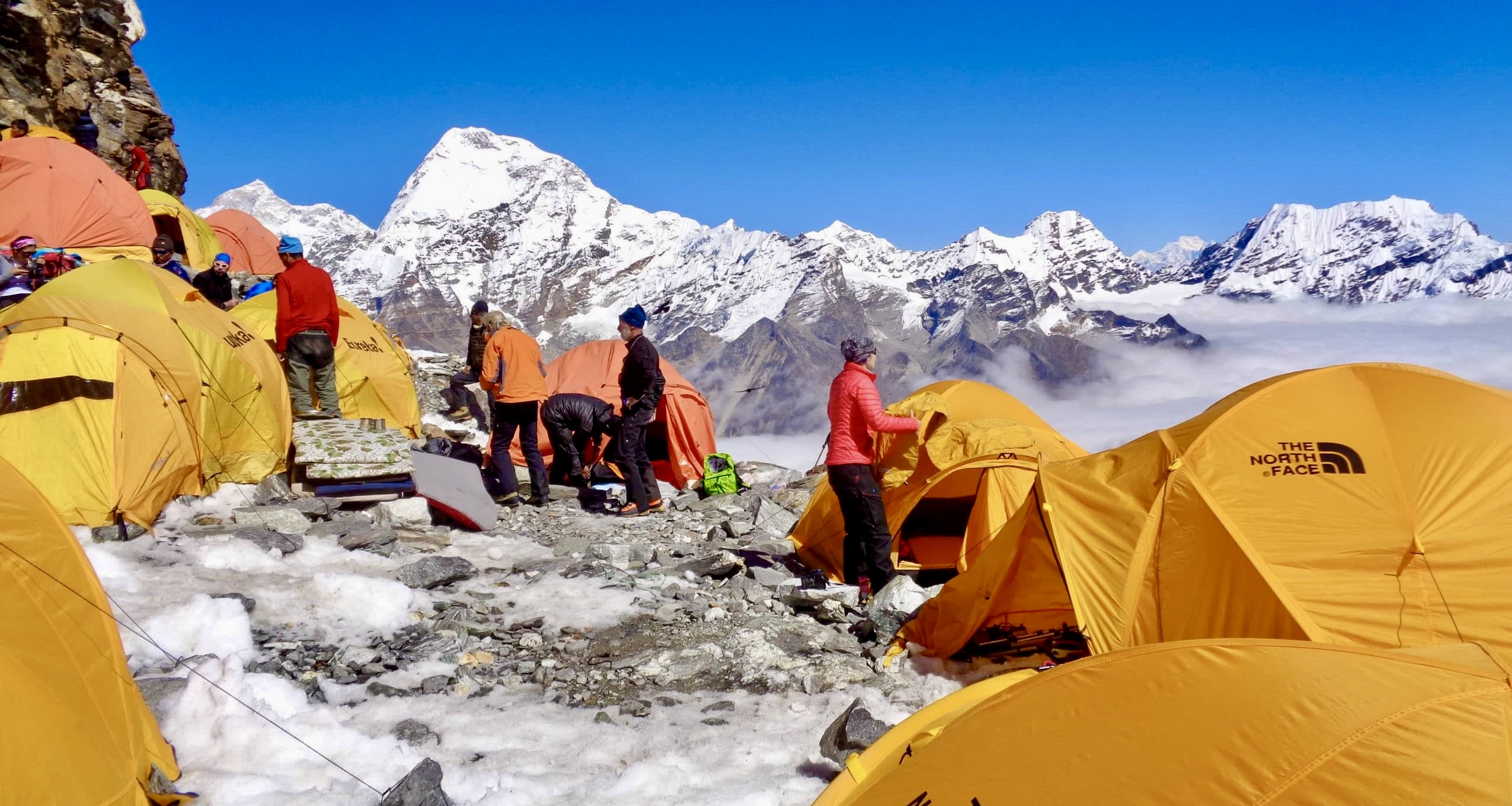
Your camera gear will face harsh conditions – cold temperatures drain batteries quickly, and the high altitude can affect camera mechanics. We always bring at least 3-4 extra batteries and keep them warm inside our sleeping bags at night.
For the best shots, a wide-angle lens (16-35mm) captures the vastness of the Himalayan landscape, while a medium zoom (24-70mm) works perfectly for most trekking photos. If you're serious about mountain photography, a longer telephoto lens (70-200mm) lets you capture distant peaks in amazing detail.
Don't forget a lightweight tripod for those stunning sunrise shots at high camp – the golden light on Everest, Lhotse, and Makalu is absolutely worth the extra weight in your pack!
Protect your gear with silica gel packets and a good weatherproof bag. The dusty trails below and potential snow higher up can wreak havoc on delicate equipment if you're not careful.
Previous Climbers' Experiences
Success stories from past expeditions
Every season, we witness incredible triumph stories on Mera Peak. Just last year, a 65-year-old retired teacher from Australia reached the summit despite having no previous high-altitude climbing experience. With proper training and our guidance, she conquered her fears and the mountain alike.
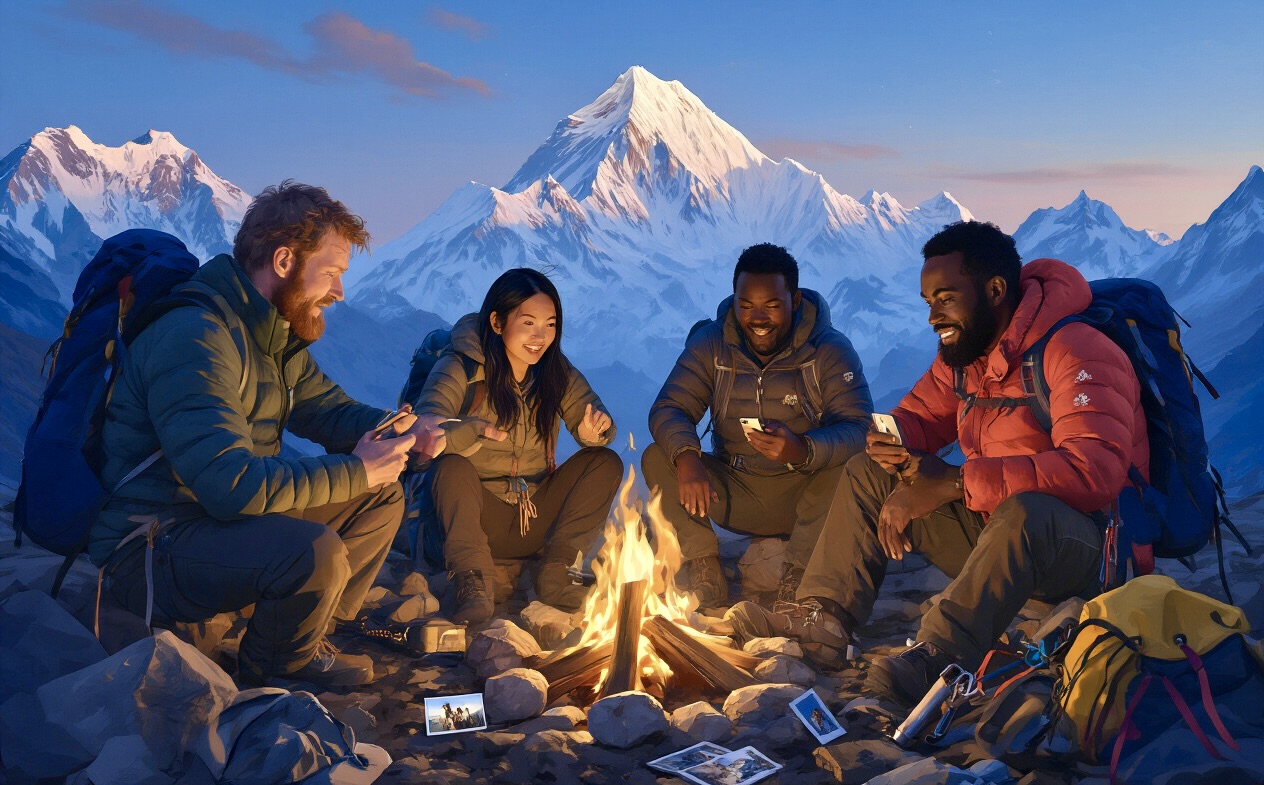
Our 2022 expedition included a group of five friends who had dreamed of climbing together since college. When one member struggled with altitude sickness at 5,700m, rather than leaving him behind, the team and our guides adjusted their pace. All five made it to the summit together, proving that solidarity and proper acclimatization can overcome physical challenges.
We're particularly proud of our 2021 all-women expedition that saw 100% summit success - a rarity even on more accessible peaks. Their journey has inspired dozens more female climbers to join our expeditions.
Challenges faced and how they were overcome
Mountain weather throws curveballs at everyone, and Mera is no exception. During our November 2022 expedition, unexpected heavy snowfall hit at High Camp. Our experienced guides immediately implemented Plan B - we waited an extra day, started earlier than planned, and took a slightly modified route to avoid avalanche-prone sections.

Altitude sickness affects even the fittest climbers. When a marathon runner in our group showed signs of HAPE at 5,800m, our guides recognized the symptoms immediately. We orchestrated a quick descent with oxygen support, and after recovery at lower altitude, he was able to make a second successful summit push.
Equipment failures happen, too. When a client's crampon broke at a critical section, our guides had spare parts ready. The repair took minutes instead of ending someone's climb prematurely.
Testimonials from satisfied clients
"I couldn't believe how patient the Sherpa guides were with me. I was the slowest in my group, but never once did I feel rushed or inadequate. That's why I made it to the top." - Sarah K., Canada
"What sets this team apart is their attention to detail. The pre-climb training on glacier travel saved me when I slipped near the summit ridge. I knew exactly what to do because we'd practiced so thoroughly." - James T., UK
"When storms forced other groups to turn back, our guides found safe passage. Their knowledge of the mountain is unmatched. This wasn't just a climb; it was a masterclass in mountaineering." - Miguel R., Spain
"The food was incredible! How they managed to serve fresh meals at 5,800m is beyond me. That extra comfort made all the difference during the tough days." - Anna P., Germany
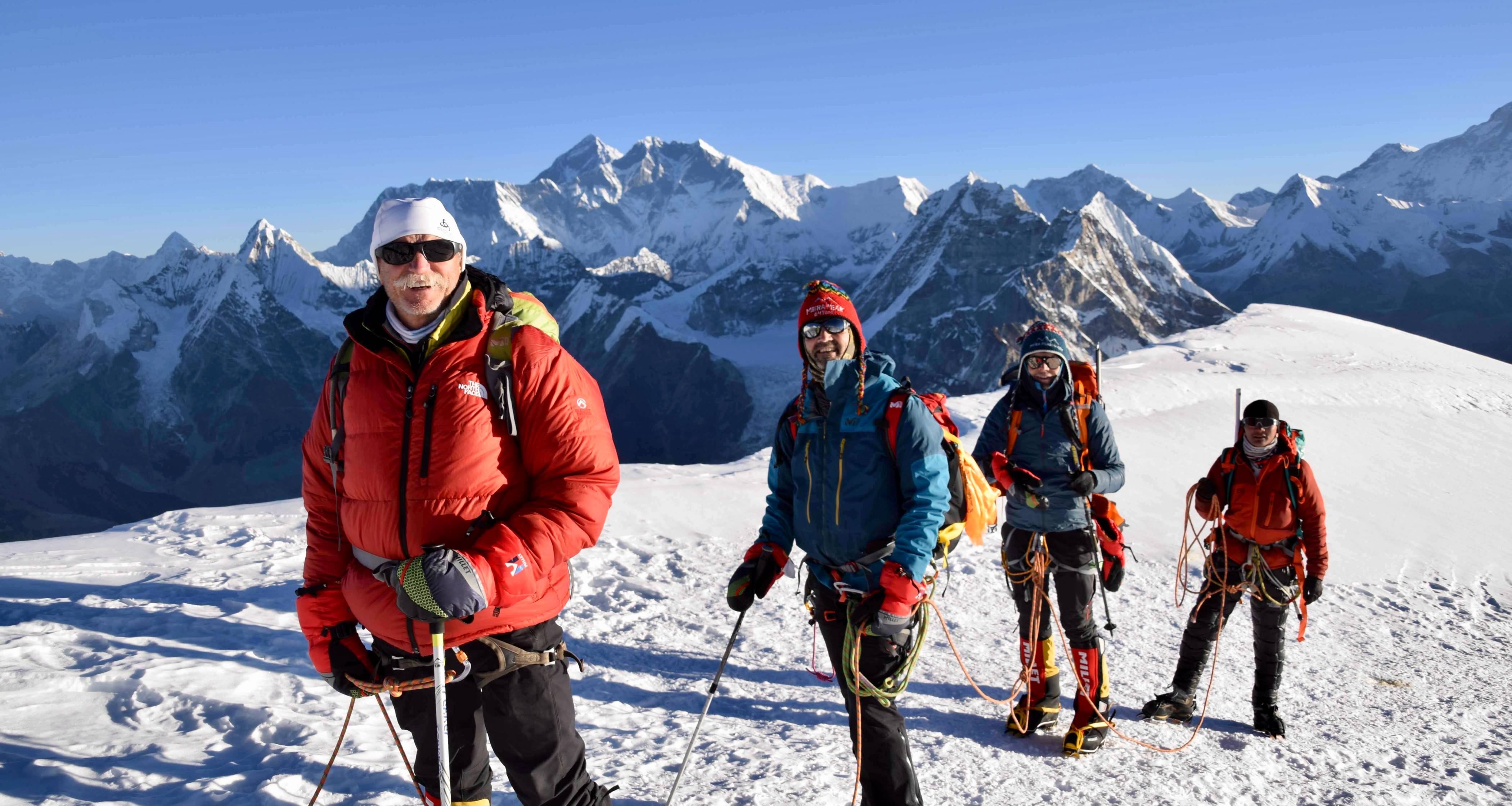
Embarking on a Mera Peak climbing adventure represents one of the most rewarding Himalayan experiences available to mountaineers seeking to test their skills at high altitude. As outlined in this guide, proper preparation—from understanding the complete cost breakdown to following our detailed itinerary and packing the essential gear—significantly increases your chances of a successful summit. Everest Sherpa Expeditions provides comprehensive support throughout your journey, ensuring you can focus on the climb while we handle the logistics.
Your Mera Peak adventure awaits, offering breathtaking panoramic views of five 8,000-meter peaks including Everest, Lhotse, Cho Oyu, Makalu, and Kanchenjunga. Whether you're an aspiring mountaineer or seeking to expand your high-altitude experience, our team of experienced Sherpa guides stands ready to help you achieve this magnificent 6,476-meter summit.
Contact Everest Sherpa Expeditions today to begin planning your unforgettable Mera Peak climbing experience—where your Himalayan dreams become reality.
If you need any further information, please contact us by email: [email protected], Phone: +977- 980 195 6248 (WhatsApp).

